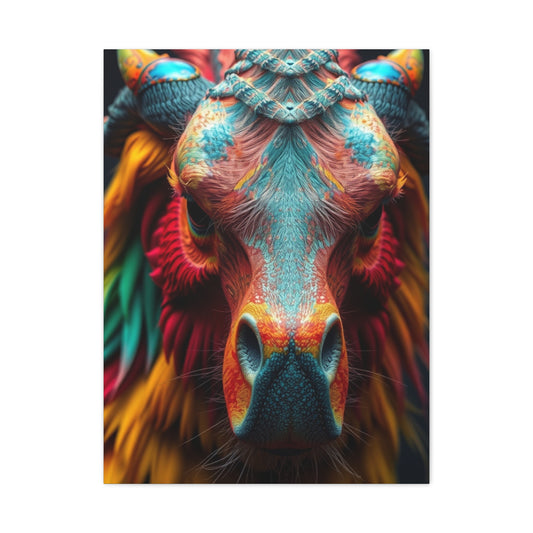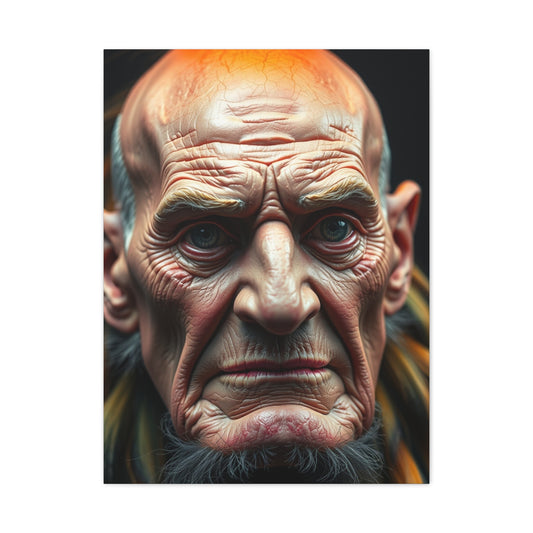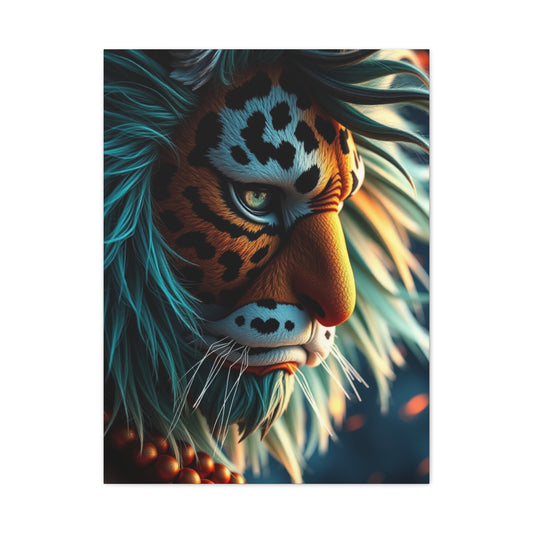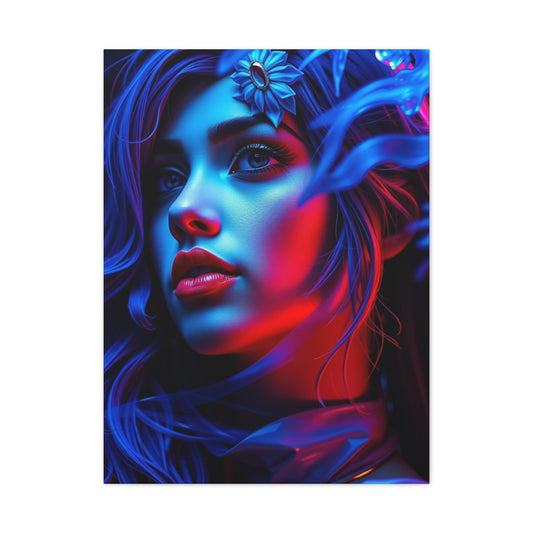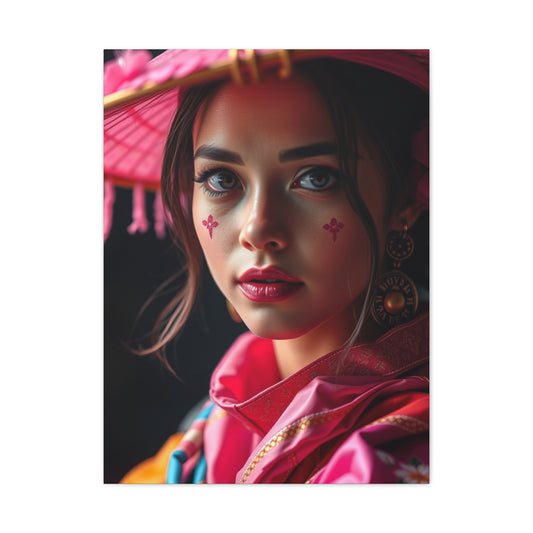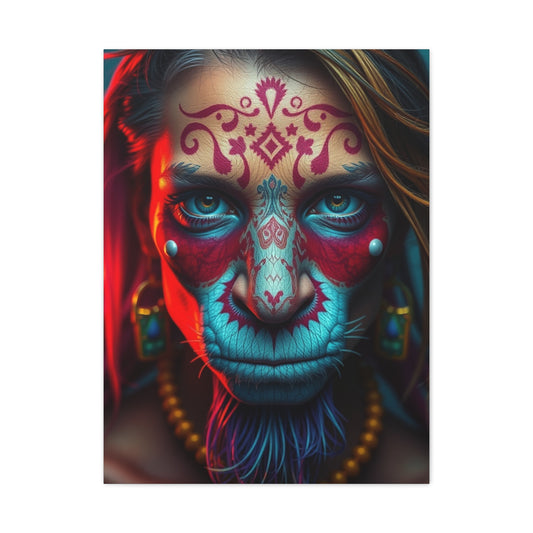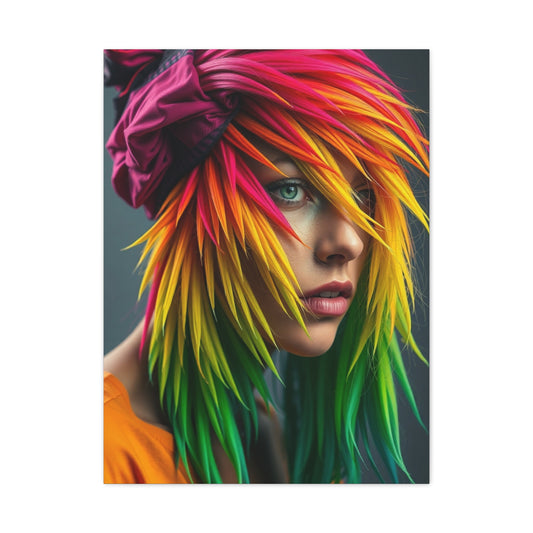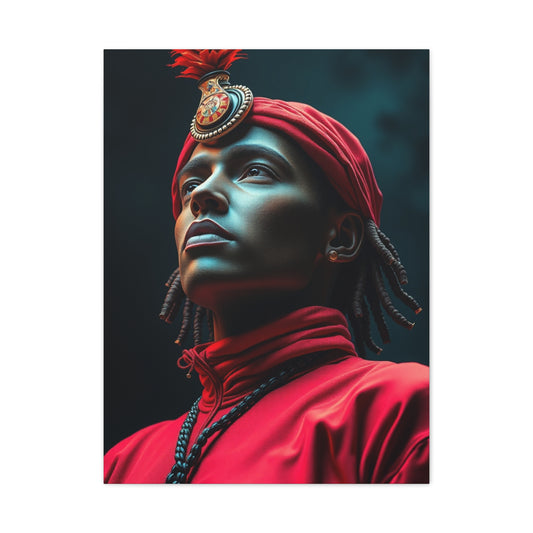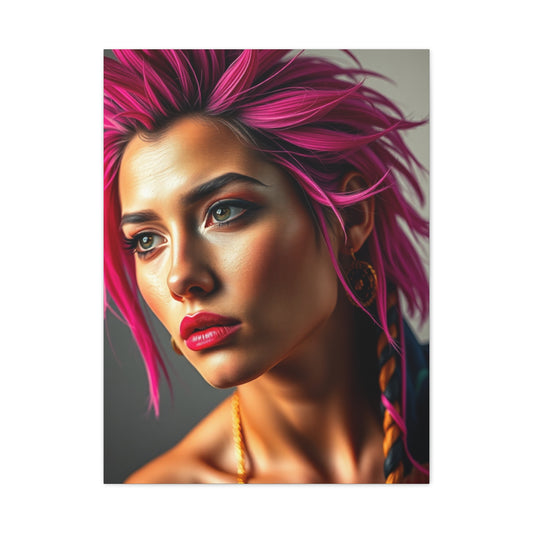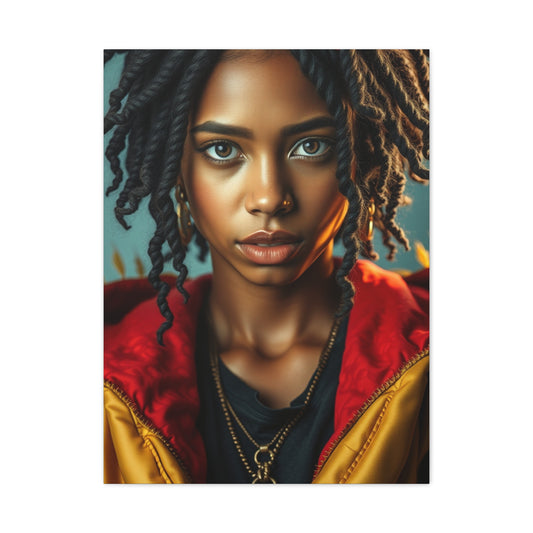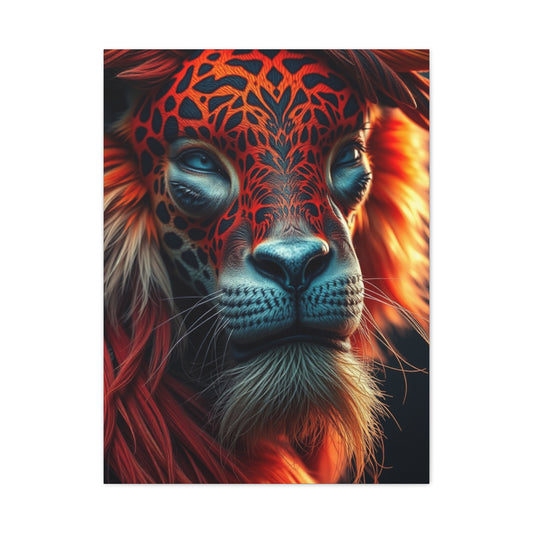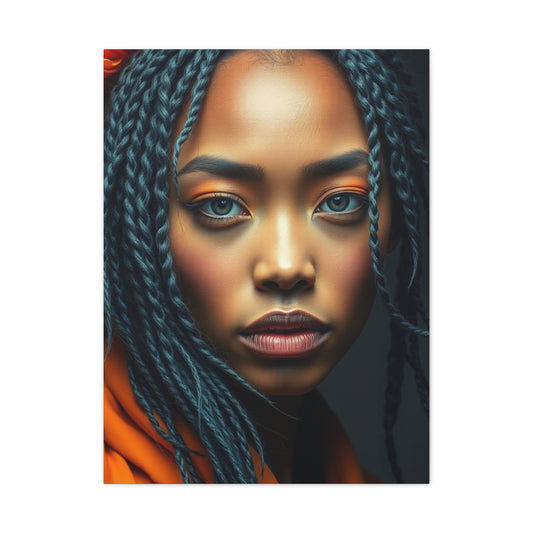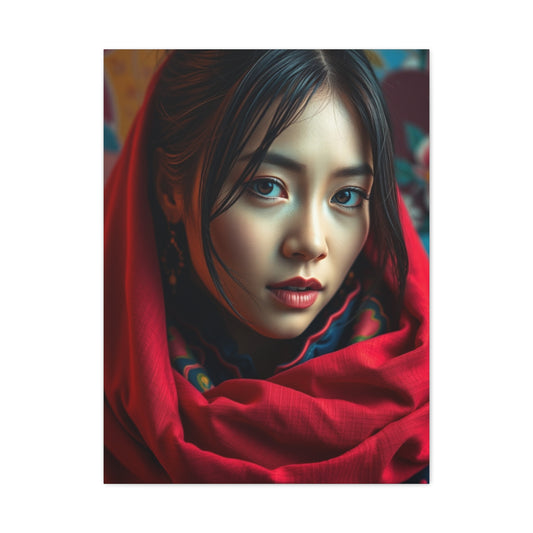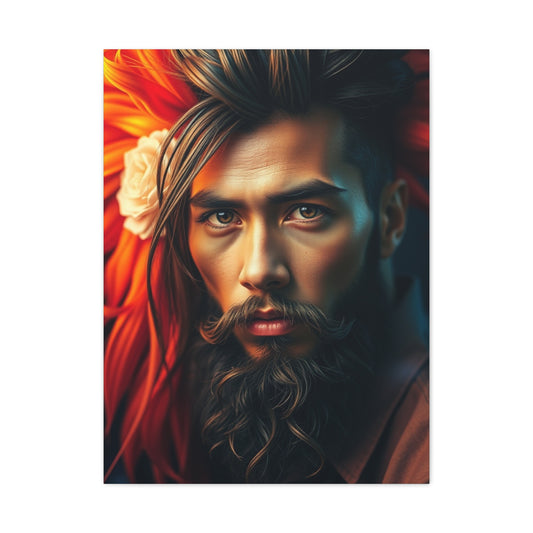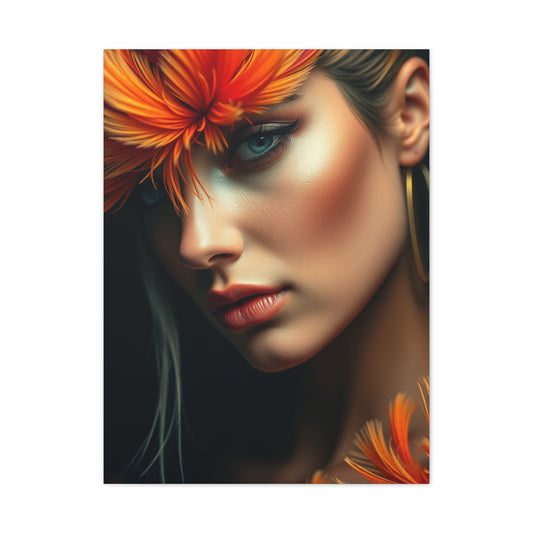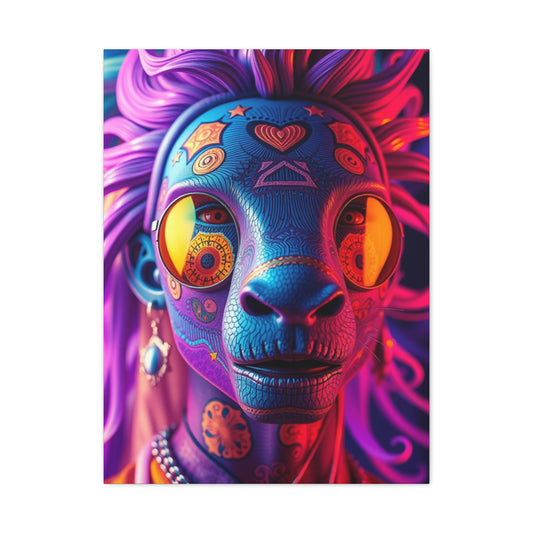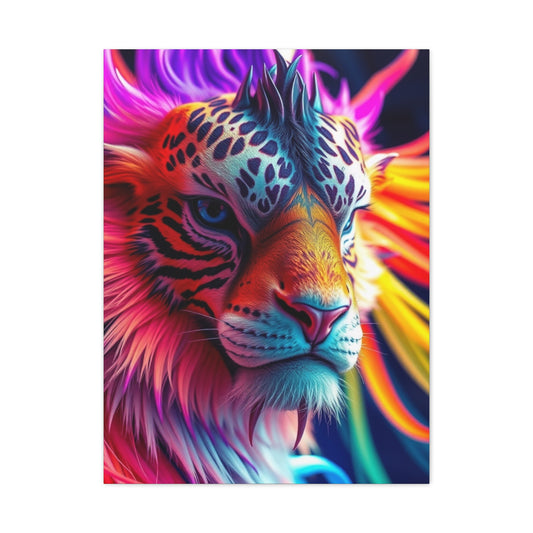Vibrant Wall Art Ideas to Instantly Brighten Your Space
Colorful wall decor has the power to completely transform a room, infusing it with energy, personality, and visual interest. Vibrant wall art can serve as the centerpiece of your interior design, drawing attention and creating an atmosphere that reflects your unique style. Whether your home features a minimalist layout or a more eclectic aesthetic, the addition of lively colors can dramatically enhance the feel of any space. By thoughtfully selecting wall art, you can establish focal points that guide the eye, introduce thematic elements, and make your living areas feel more inviting and harmonious. The key lies in understanding how color interacts with light, space, and the objects around it, as well as how to balance personal expression with cohesive design.
Understanding Color Theory for Wall Decor
Color theory forms the foundation of any successful approach to vibrant wall art. Different colors evoke distinct emotions and influence the perception of space. Warm tones, such as reds, oranges, and yellows, tend to create a sense of energy, warmth, and intimacy. They are particularly effective in areas intended for social interaction, like living rooms or dining spaces. On the other hand, cool tones, including blues, greens, and purples, promote calmness, serenity, and focus, making them suitable for bedrooms, study areas, or meditation corners.
It is essential to consider not only the emotional impact of colors but also their visual relationships. Complementary colors, those positioned opposite each other on the color wheel, can create striking contrast and make wall art stand out. Analogous colors, found next to each other on the wheel, produce harmony and a more subtle, cohesive effect. Incorporating these principles can help you curate wall art that both captures attention and maintains balance within your space.
Harmonizing Wall Art with Existing Interiors
When introducing vibrant wall art, it is critical to consider how the new decor interacts with your existing interior scheme. Walls often serve as the backdrop for furniture, rugs, and decorative objects, and the colors chosen for wall art should complement or thoughtfully contrast these elements. In neutral or monochromatic spaces, bright wall art can act as a striking focal point, adding dimension and energy without overwhelming the senses.
In spaces with existing color palettes, vibrant wall art should harmonize with or thoughtfully offset other design elements. For example, if your furniture features soft pastels, artwork with rich jewel tones can provide depth and intrigue. Conversely, if your room already contains bold colors, selecting artwork with a balanced composition or incorporating neutral shades can prevent the space from appearing chaotic. The interplay between wall art and surroundings creates a dynamic, visually engaging environment that feels both curated and organic.
Choosing Vibrant Wall Art That Resonates
Selecting wall art that speaks to your personality and aesthetic preferences is a central component of designing a visually compelling space. Vibrant wall art should not only enhance the color scheme but also reflect your taste, lifestyle, and the atmosphere you wish to cultivate. Abstract compositions allow for imaginative interpretations, using color, form, and texture to evoke emotions or convey movement. Nature-inspired pieces can introduce tranquility, vibrancy, and a connection to the outdoors, while typography or graphic art can convey a personal message or narrative in a bold, expressive manner.
Considering the scale of the wall art is equally important. Large pieces can dominate a room, establishing a clear focal point, while smaller collections can be arranged into galleries to create rhythm and variety. Experimenting with different sizes, orientations, and framing styles allows you to curate a display that feels cohesive and balanced, giving your space a personalized signature.
Incorporating Textiles as Wall Art
Textiles offer a versatile and tactile approach to vibrant wall art, bringing both color and texture to your walls. Tapestries, fabric panels, and woven art pieces can transform a blank wall into a dynamic surface that engages the senses. The interplay of patterns, materials, and hues in textile art can introduce warmth, depth, and a sense of intimacy to a room. Fabric art also allows for easy experimentation; you can switch pieces seasonally or rotate them to reflect changing moods, holidays, or personal preferences.
When selecting textiles, consider how their colors and patterns interact with other elements in your space. Rich, saturated tones can make a dramatic statement, while more subtle patterns offer a sophisticated accent. Hanging techniques, such as rods, clips, or stretched frames, further influence the visual impact, allowing you to control how the textile drapes, folds, or flows within your environment. Textiles can also soften acoustics, add warmth, and create a sense of layering, enhancing the overall sensory experience of your home.
Supporting Local Artists for Unique Wall Art
Sourcing vibrant wall art from local artists not only introduces originality and authenticity to your space but also fosters creativity within your community. Local art often reflects the culture, environment, and character of the area, offering pieces that are distinctive and meaningful. By incorporating works from local talent, your walls become more than decorative surfaces; they transform into personalized galleries that tell a story, celebrate individuality, and support artistic endeavors.
Exploring local galleries, studios, and art fairs can lead to the discovery of unexpected gems that resonate with your personal taste. Online marketplaces also provide access to emerging artists, allowing you to select pieces that are both affordable and unique. When investing in vibrant wall art, consider the narrative behind each piece, the techniques employed, and how it harmonizes with your existing interiors. Supporting local creators not only enriches your living space but also contributes to the sustainability and growth of the broader artistic community.
DIY Vibrant Wall Art Projects for Personal Expression
Creating your own vibrant wall art allows for a deep level of personalization and creative freedom. DIY projects not only provide an outlet for artistic expression but also enable you to produce pieces that perfectly complement your space. By exploring different techniques, mediums, and textures, you can design wall art that reflects your personality while introducing energy and color to any room.
One approach is painting directly on canvas or wood panels. Acrylic paints are ideal for bold, vibrant colors and can be layered to produce depth and texture. Experimenting with abstract designs, geometric patterns, or fluid art techniques can yield pieces that are visually striking and unique. The process of mixing colors, blending gradients, and adding brush strokes allows you to explore your creativity while crafting wall art tailored to your space.
Another option is mixed media art, which combines different materials such as fabric, paper, metal, or natural elements. By layering textures and incorporating three-dimensional components, you can produce wall art that engages both sight and touch. For example, combining painted sections with fabric appliqués or metallic accents can create a dynamic piece that draws attention and becomes a conversation starter.
Exploring Color Combinations for Vibrant Wall Art
Selecting effective color combinations is central to creating visually appealing wall art. Understanding how colors interact, complement, and contrast with each other allows you to design pieces that are harmonious yet stimulating. Monochromatic schemes use variations of a single hue to create subtle, cohesive effects, while complementary color schemes place opposing colors together to generate bold visual interest. Analogous color schemes, using colors that are adjacent on the color wheel, provide a smoother transition and softer visual flow.
Layering colors with varying saturation and intensity can enhance the dimensionality of your wall art. High contrast between bright and muted tones draws the eye, while gradual tonal shifts produce a calming gradient effect. Exploring these relationships through experimentation can help you find the perfect balance between vibrancy and cohesion, ensuring that your wall art complements your space without overwhelming it.
Utilizing Found Objects for Colorful Wall Decor
Incorporating found objects into wall art is an inventive way to add color, texture, and narrative to your walls. Everyday items such as vintage plates, woven baskets, glass bottles, or reclaimed wood can be repurposed into unique pieces of art. Painting or decorating these objects in vibrant colors transforms them from ordinary items into focal points of your room.
Assemblage art, which arranges multiple found objects into a single composition, allows for storytelling through visual elements. Each component contributes to the overall aesthetic while adding depth, texture, and intrigue. This approach encourages creativity and resourcefulness, giving new life to items that might otherwise go unused. The combination of vivid colors, diverse materials, and imaginative arrangements produces vibrant wall art that is both visually stimulating and meaningful.
Large Scale Wall Art Installations
Large-scale wall art installations can dramatically alter the atmosphere of a room. Oversized canvases, murals, or wall panels create a sense of grandeur and serve as commanding focal points within the space. When designing large installations, consider how the composition, color palette, and placement interact with architectural features such as windows, doors, and ceiling height.
Murals allow for expansive creativity, enabling you to incorporate landscapes, abstract designs, or thematic narratives directly onto walls. They can transform plain surfaces into immersive environments and convey a sense of scale that smaller pieces cannot achieve. Similarly, oversized framed artwork or multiple-panel compositions can create visual continuity, linking different areas of a room while maintaining the vibrancy and energy of your design.
Integrating Lighting to Enhance Vibrant Wall Art
Lighting plays a crucial role in the perception of color and the impact of wall art. The right lighting can intensify colors, create shadows that add depth, and highlight textures that may otherwise go unnoticed. Natural light enhances the true hues of wall art, while artificial lighting allows for precise control over ambiance and mood.
Directional lighting, such as track or spotlights, can emphasize specific pieces, drawing attention to focal points and accentuating details. Soft, diffused lighting can create an inviting atmosphere while subtly illuminating artwork. Experimenting with color temperature and intensity enables you to manipulate how vibrant wall art appears throughout the day, creating dynamic visual experiences that evolve with light conditions.
Framing and Presentation Techniques
The way wall art is framed and presented can significantly influence its visual impact. Frames provide structure, context, and a sense of completion, allowing the artwork to stand out against surrounding surfaces. Minimalist frames highlight the colors and composition without distraction, while ornate or textured frames add sophistication and contrast.
Gallery-style presentations, where multiple pieces are arranged in a curated layout, allow for storytelling through visual sequencing. Arranging wall art by theme, color, or size creates rhythm and cohesion, transforming individual pieces into a collective experience. Floating frames, shadow boxes, and frameless panels offer alternative presentation methods that can enhance depth and dimensionality, emphasizing the vibrant qualities of your artwork.
Incorporating Wall Sculptures and Three-Dimensional Art
Three-dimensional wall art introduces texture, depth, and tactile engagement. Sculptural elements, whether made from metal, wood, resin, or fabric, provide visual interest beyond traditional two-dimensional artwork. Vibrant colors applied to three-dimensional forms enhance their presence, allowing them to catch light and cast shadows that contribute to the overall ambiance of the room.
Modular wall sculptures, where individual components can be rearranged, offer flexibility and adaptability. This approach enables experimentation with composition, scale, and color relationships, allowing you to tailor the installation to the evolving character of your space. Three-dimensional wall art invites viewers to engage with the environment actively, creating a dynamic, immersive experience that extends beyond conventional painting or prints.
Seasonal and Rotating Wall Art Displays
Changing wall art seasonally or periodically refreshes your space and keeps it visually engaging. Rotating artwork allows for experimentation with color, style, and composition without committing permanently to a single design. Seasonal wall art can reflect nature, holidays, or personal milestones, introducing subtle changes in mood and atmosphere throughout the year.
Frames, hooks, and modular displays facilitate easy swapping of artworkwhile maintaining a cohesive and polished presentation. By planning seasonal rotations, you can maintain a vibrant and evolving environment, keeping your interiors fresh and aligned with personal tastes and seasonal inspirations.
Strategic Placement of Vibrant Wall Art
Placement is one of the most crucial aspects of using vibrant wall art effectively. The right positioning can amplify the visual impact, create balance, and define the mood of a room. Consider the natural focal points in each space, such as above a sofa, bed, or fireplace, and position artwork to draw the eye and complement the flow of the room. The height of wall art is equally important. Typically, the center of the artwork should be at eye level, around 57 to 60 inches from the floor, allowing for comfortable viewing without straining the neck or eyes.
In larger rooms, multiple pieces can be grouped to form a gallery wall. Thoughtful arrangement ensures that colors, shapes, and sizes are balanced, creating harmony and rhythm. Symmetrical layouts provide a formal and structured feel, while asymmetrical arrangements offer dynamism and creativity. Allowing breathing space between pieces prevents the display from appearing crowded and helps each artwork stand out individually while contributing to the overall aesthetic.
Creating Visual Flow with Wall Art
Visual flow refers to how the eye naturally moves across a space. When incorporating vibrant wall art, guiding the viewer’s gaze enhances the perception of harmony and coherence. Using color repetition across different pieces can create a sense of connection, while variations in scale and orientation add interest and movement. For example, smaller, brightly colored pieces can be clustered near larger, more neutral works to create a dynamic contrast that draws attention across the entire wall.
Directional elements within the artwork, such as lines, shapes, or abstract forms, can also influence visual flow. Diagonal lines suggest motion, leading the eye through a composition, while vertical lines emphasize height and grandeur. Curved or circular motifs create softness and continuity, promoting a more relaxed experience. By considering both placement and internal composition, you can achieve a balanced and engaging display that enhances the ambiance of your room.
Layering and Textural Contrast
Layering is an advanced technique that adds depth, complexity, and tactile interest to wall art arrangements. Combining two-dimensional and three-dimensional pieces, such as canvases with sculptural wall elements or textiles, creates a multi-layered environment that engages multiple senses. Textural contrast further enhances the richness of a display. Smooth surfaces juxtaposed with rough, woven, or metallic elements highlight the vibrancy of colors while introducing visual intrigue.
Incorporating materials with reflective qualities, such as glass, polished metal, or glossy finishes, can create subtle highlights and enhance color intensity under different lighting conditions. Soft textiles, matte paints, and natural fibers provide warmth and a grounded feel, balancing more vivid, high-contrast elements. Layering and textural contrast encourage exploration, drawing viewers in to examine details closely and appreciate the craftsmanship and intention behind each piece.
Color Gradients and Thematic Cohesion
When curating vibrant wall art, employing color gradients can produce striking visual effects. Arranging pieces from light to dark shades of the same hue or transitioning across a spectrum of complementary colors creates continuity and flow. Gradients can be subtle, with slight shifts in saturation, or bold, moving between contrasting tones to energize a space. This technique works well for large gallery walls or multi-panel installations, as it visually connects disparate pieces into a cohesive narrative.
Maintaining thematic cohesion strengthens the impact of your display. Themes can be based on subject matter, artistic style, or conceptual ideas. For instance, botanical prints, abstract compositions, or cultural motifs can unify a diverse collection of artwork. Even when experimenting with different media or styles, a consistent color palette or recurring visual motif can tie the arrangement together, ensuring that vibrancy does not descend into chaos.
Incorporating Mirrors and Reflective Surfaces
Mirrors and reflective surfaces are powerful tools when working with vibrant wall art. They amplify light, create a sense of depth, and visually expand a room. Placing mirrors near colorful pieces can reflect hues, doubling the vibrancy and enhancing the perceived size of the space. Similarly, metallic accents or mirrored frames can interact with surrounding colors, producing subtle highlights and dynamic visual effects.
When using reflective elements, balance is key. Overuse can create a distracting or disorienting effect. Instead, strategically position mirrors to complement the artwork and allow natural light or artificial lighting to accentuate colors. This technique works particularly well in smaller rooms or areas with limited natural light, helping to energize the space and emphasize the boldness of vibrant wall art.
Customizing Wall Art for Personal Spaces
Personalization is essential for making wall art resonate with your space and lifestyle. Customized pieces, whether commissioned or self-created, reflect individuality and inject a sense of meaning into your interiors. Personal photographs, abstract interpretations of favorite memories, or artwork inspired by significant events provide emotional depth and connection. Incorporating personal elements into vibrant wall art ensures that the decor is not only visually appealing but also meaningful.
Custom framing and sizing further enhance personalization. Choosing materials, colors, and dimensions that complement your furniture and architectural features reinforces cohesion while allowing the artwork to serve as a statement piece. Personal touches can also extend to unconventional wall art formats, such as 3D sculptures, modular panels, or interactive installations, blending creativity and functionality seamlessly.
Wall Art as a Statement of Identity
Vibrant wall art can be a reflection of identity, cultural heritage, or personal values. Selecting pieces that align with your worldview or interests turns your living space into a narrative canvas. Cultural art, handcrafted pieces, or artwork from diverse communities introduces authenticity and richness, while abstract or experimental designs communicate creativity and innovation.
Statement pieces are most effective when they occupy prominent positions or serve as the central element of a gallery wall. Large canvases, bold murals, or dramatic sculptural installations draw attention and set the tone for the entire room. They invite conversation and interaction, providing a visual representation of personality and taste that resonates with guests and inhabitants alike.
Combining Wall Art with Furniture and Accessories
The integration of wall art with furniture and accessories enhances harmony and visual cohesion. Vibrant colors can be echoed in cushions, rugs, or decorative objects, creating a layered and unified design. Contrasting tones can highlight both the artwork and surrounding elements, emphasizing focal points while maintaining balance.
Proportion and scale are critical when coordinating wall art with furniture. Large pieces require substantial negative space to prevent visual clutter, while smaller works benefit from grouping or framing to establish significance. Accessories such as vases, sculptures, or lighting fixtures should complement, not compete with, the artwork, ensuring that each element contributes to a coherent, visually appealing environment.
Advanced Techniques for Layered Wall Art Displays
Advanced techniques elevate wall art from decoration to immersive design. Multi-panel compositions, such as triptychs or diptychs, create continuity while allowing for subtle variations in color, texture, or form. Rotating or modular panels provide adaptability, enabling you to refresh your environment without replacing entire installations.
Integrating multiple media, such as combining paintings, photographs, sculptures, and textiles, adds dimension and complexity. This multi-sensory approach encourages exploration and interaction, transforming walls into dynamic spaces that engage and inspire. Strategic layering, paired with thoughtful lighting, scale, and thematic coherence, produces environments where vibrant wall art becomes a defining feature of your home’s character.
Maintaining Vibrant Wall Art Over Time
Maintaining the longevity and visual impact of wall art requires attention to environmental factors, cleaning, and preservation. Exposure to direct sunlight, humidity, or fluctuating temperatures can fade colors or damage materials. Selecting UV-protective coatings, proper framing, and strategic placement helps preserve vibrancy and structural integrity.
Regular cleaning with appropriate materials ensures that dust, dirt, or grime does not dull colors or textures. For delicate textiles, fabrics, or mixed-media pieces, gentle vacuuming or professional cleaning may be necessary. Monitoring and adjusting lighting conditions, rotating seasonal pieces, and updating arrangements keep your wall art dynamic, fresh, and visually engaging over time.
Finishing Touches for Vibrant Wall Art
Adding finishing touches to vibrant wall art can elevate its impact and integrate it seamlessly into your living space. Frames, mats, and borders define the edges of artwork, providing structure and enhancing color vibrancy. While minimalist frames draw attention to the piece itself, textured or ornate frames can complement the artistic style, adding sophistication and visual depth.
Consider layering frames or using shadow boxes to introduce subtle dimensionality. These techniques create a sense of depth and allow the artwork to interact with light, emphasizing textures and enhancing colors. Finishing touches also include strategic placement of complementary accessories, such as lighting, decorative objects, or plants, which can highlight the artwork and create a cohesive environment.
Seasonal and Rotating Wall Art Displays
Rotating wall art seasonally introduces freshness and adaptability to your interiors. Changing artwork according to the seasons allows you to explore different color palettes, moods, and themes. For example, spring and summer may benefit from bright, floral-inspired pieces, while autumn and winter could embrace richer, warmer tones.
Seasonal displays also encourage creativity and experimentation. You can mix new pieces with existing art to create dynamic arrangements that evolve throughout the year. Modular panels, hanging systems, and easy-to-switch frames make this process seamless, allowing your walls to remain vibrant and engaging without permanent alteration.
Integrating Trends into Vibrant Wall Art
Keeping up with design trends can inform your approach to vibrant wall art, ensuring that your space feels modern and stylish while maintaining personal expression. Popular trends include abstract geometric patterns, large-scale murals, mixed-media installations, and bold color blocking. Incorporating trending motifs does not require fully replacing existing artwork; instead, subtle accents or complementary pieces can refresh your decor.
Trends in color also influence vibrancy and perception. For instance, jewel tones, neon accents, and gradient designs are currently popular for creating energetic and eye-catching walls. Integrating these trends thoughtfully ensures that your space remains contemporary without sacrificing cohesion or individuality.
Creating Focal Points with Wall Art
Focal points guide attention and structure the visual hierarchy of a room. Vibrant wall art is particularly effective in establishing a central focus, anchoring the space, and enhancing other design elements. Large canvases, murals, or statement sculptures naturally draw the eye, providing a sense of balance and intention.
Focal points can also be enhanced through contrast, scale, and placement. Positioning bright or oversized pieces against neutral walls amplifies their impact, while grouping smaller vibrant pieces can create a collective focal effect. Properly executed, these strategies transform walls into visually engaging compositions that organize the room and elevate its aesthetic.
Harmonizing Wall Art with Lighting
Lighting dramatically affects the perception of color, texture, and overall impact of wall art. Layered lighting, which combines ambient, task, and accent sources, allows for precise control over how artwork is seen and experienced. Track lighting or spotlights can highlight specific pieces, creating emphasis and enhancing vibrancy, while soft ambient light provides a consistent glow that maintains color integrity.
Natural light interacts uniquely with vibrant wall art, revealing subtle variations in tone and intensity. Consider window placement, time of day, and reflective surfaces to optimize lighting conditions. Using dimmers or adjustable fixtures offers flexibility, allowing you to adapt lighting based on mood, occasion, or season, and ensuring that wall art remains visually striking under varying conditions.
Combining Vibrant Wall Art with Furniture and Accessories
Integrating wall art with furniture and accessories ensures a cohesive and harmonious interior. Color repetition between artwork and upholstery, rugs, or decorative objects creates visual unity, while contrasting tones provide focal interest. Scale is key; larger pieces require more negative space, while smaller works may benefit from grouping or layering to achieve significance.
Accessories should complement rather than compete with artwork. Decorative items, plants, or sculptural elements can echo motifs, colors, or textures, reinforcing design cohesion. The careful balance of these elements ensures that vibrant wall art remains the highlight of the space while contributing to an overall aesthetic narrative.
Using Multi-Media and Mixed-Material Art
Multi-media wall art offers texture, depth, and engagement beyond traditional paintings or prints. Combining elements such as fabric, metal, wood, glass, or resin allows for innovative, layered compositions that interact with light and perspective. Mixed-material art can create focal points, encourage tactile exploration, and enrich the sensory experience of a room.
Incorporating three-dimensional or interactive components adds dynamic interest. Modular sculptures, moveable panels, and layered canvases invite viewers to experience the artwork from multiple angles, creating an immersive environment. This approach is particularly effective in modern interiors, where vibrant wall art serves as a statement piece that balances creativity, individuality, and functionality.
Personalized and Custom Wall Art
Custom wall art allows you to infuse your space with personal meaning and style. Commissioned pieces, self-created artwork, or reinterpretations of personal photographs provide unique visual narratives. Customization includes selecting colors, sizes, materials, and framing options that align with both the space and personal taste.
Personalized wall art transforms interiors into expressive environments that reflect identity and lifestyle. Whether it is a large statement piece, a gallery arrangement, or a modular installation, bespoke artwork creates a distinct visual voice and enhances emotional connection with your home.
Maintaining Vibrancy and Longevity
Preserving the vibrancy and longevity of wall art requires mindful care. Exposure to direct sunlight, humidity, and fluctuating temperatures can damage colors and materials over time. Using UV-protective coatings, proper framing, and strategic placement minimizes these risks.
Regular cleaning prevents dust or grime from dulling colors. For delicate fabrics, mixed-media pieces, or textiles, professional cleaning may be necessary. Seasonal rotation and careful handling maintain freshness and adaptability, ensuring that your wall art continues to inspire and engage for years to come.
Conclusion :
Vibrant wall art provides a powerful tool for transforming interiors, creating energy, depth, and personal expression. Through finishing touches, seasonal updates, trend integration, strategic placement, layered lighting, and personalized elements, wall art becomes a central design element that defines a space. By combining creativity with thoughtful design, you can curate walls that are visually compelling, harmonious, and enduring, elevating your home into an environment that celebrates individuality, beauty, and artistic expression.

